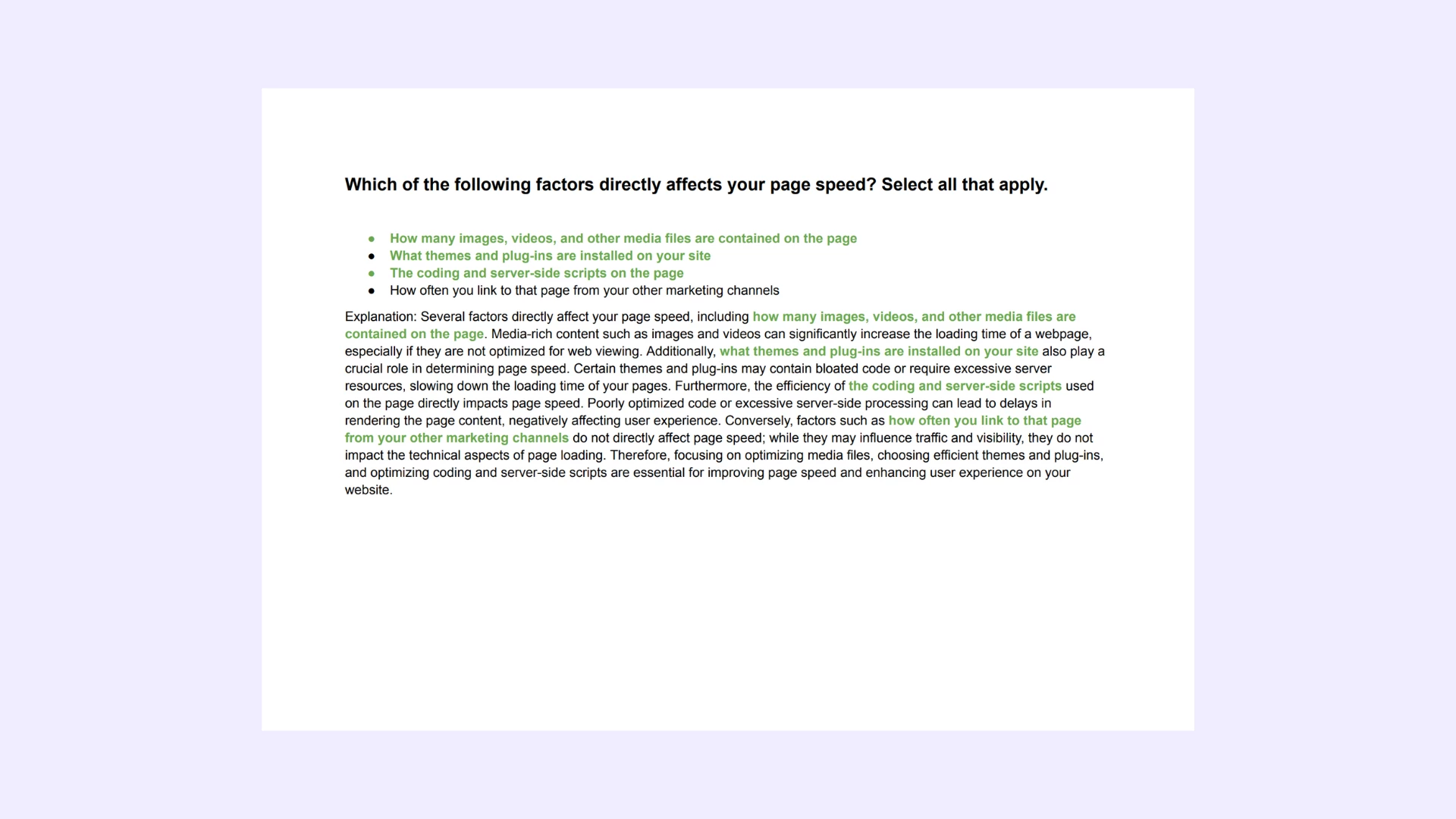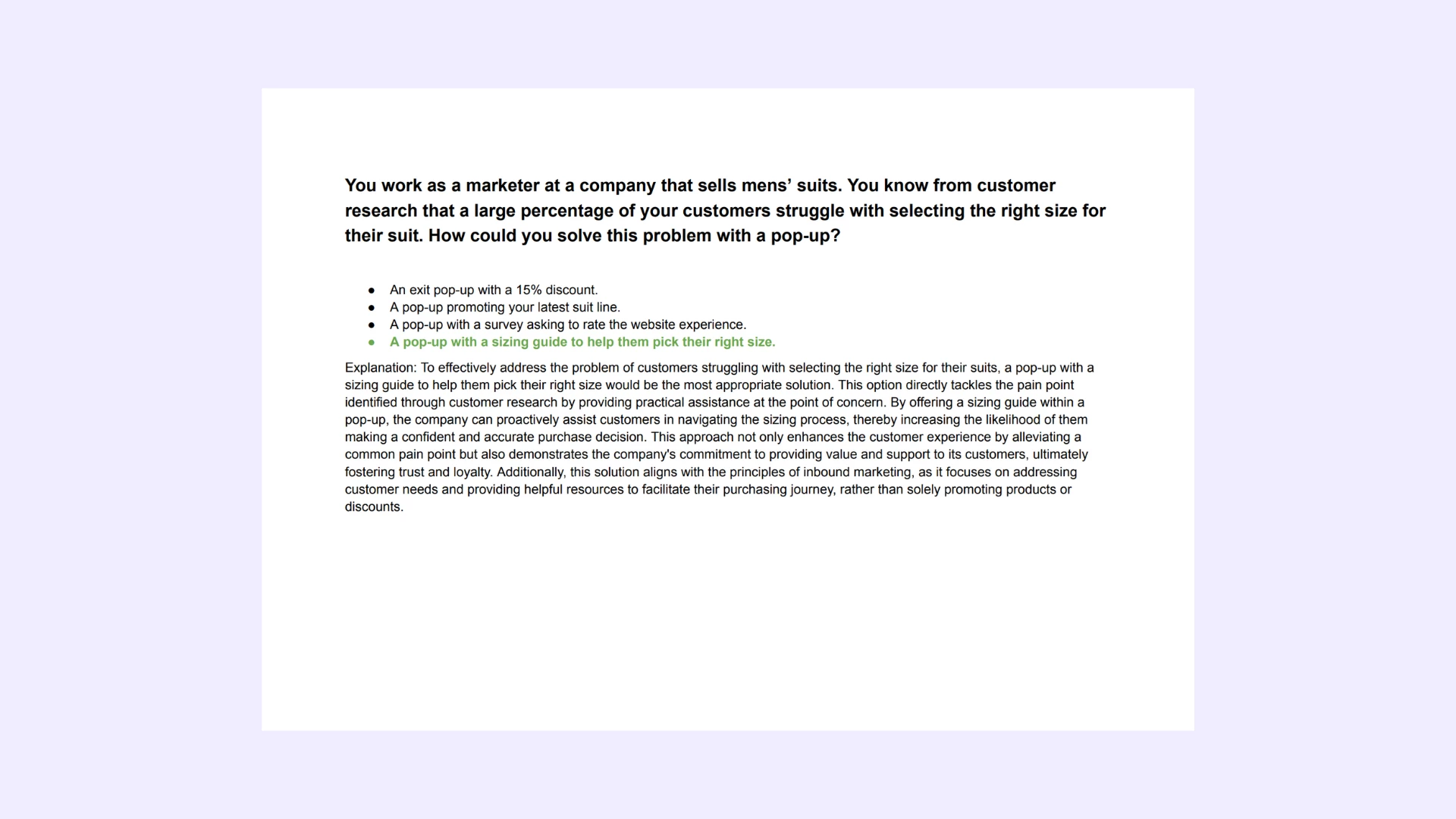Which of the following is a problem with thinking of your business as a funnel?
There is a larger volume of liquid in the top of the funnel than in the bottom of the funnel.
After something exits the bottom of a funnel, it no longer has any impact on the things entering the top of the funnel.
The funnel is an outdated piece of technology that has been replaced in modern times by more elegant solutions.
A funnel can’t balance upright without external support.

HubSpot Roll. Includes Answers for Every Real HubSpot Certification Exam.
All-in-One: Get all HubSpot exams answers with explanations in one bundle. This package includes answers for every current HubSpot certification. Regular updates to reflect the latest exam version. -> See what's included.


Need a single cerification exam answers? Check out our -> list of certification exams answer keys. Learn Smarter. Obtain or Renew your certificates with peace of mind!
Explanation: Which of the following is a problem with thinking of your business as a funnel?
Explanation: The correct answer is **After something exits the bottom of a funnel, it no longer has any impact on the things entering the top of the funnel.** Thinking of a business as a funnel implies a linear, one-way progression from initial contact to conversion, which oversimplifies the complexity of customer relationships and interactions. In reality, customers often re-enter the sales cycle or influence others even after making a purchase, creating a more cyclical or iterative process rather than a linear one. By conceptualizing the business as a funnel, organizations may overlook the ongoing impact of customer experience, referrals, and retention on future sales opportunities. This narrow perspective can lead to missed opportunities for nurturing existing customers, fostering loyalty, and leveraging post-sale interactions to drive additional revenue or referrals. Therefore, while the funnel model provides a basic framework for understanding the customer journey, it's essential to recognize its limitations and adopt a more holistic approach that acknowledges the ongoing relationship between customers and the business beyond the point of sale.

Special Bundle Offer HubSpot Roll. All in One
Note: We conduct daily checks for updates on the exam, ensuring that the file contains the most recent questions from the actual certification program.
Questions | Answers | Explanations. FREE Updates.
You may also be interested:
- Special HubSpot bundle offer - all HubSpot exams in one
- HubSpot CMS for develpers certification exam answers
- HubSpot CMS for develpers II certification exam answers
- HubSpot content hub for marketers certification exam answers
- HubSpot content marketing certification exam answers
- HubSpot contextual marketing certification exam answers
- HubSpot digital advertising certification exam answers
- HubSpot digital marketing certification exam answers
- HubSpot email marketing certification exam answers
- HubSpot frictionless sales certification exam answers
- HubSpot growth driven design certification exam answers
- HubSpot inbound certification exam answers
- HubSpot inbound marketing certification exam answers
- HubSpot inbound marketing optimization certification exam answers
- HubSpot inbound sales certification exam answers
- HubSpot integrating with HubSpot I foundations certification exam answers
- HubSpot marketing hub software certification exam answers
- HubSpot reporting certification exam answers
- HubSpot revenue operations certification exam answers
- HubSpot sales enablement certification exam answers
- HubSpot sales hub software certification exam answers
- HubSpot sales management certification exam answers
- HubSpot sales software certification exam answers
- HubSpot seo certification exam answers
- HubSpot seo II certification exam answers
- HubSpot service hub software certification exam answers
- HubSpot social media marketing certification exam answers
- HubSpot social media marketing II certification exam answers